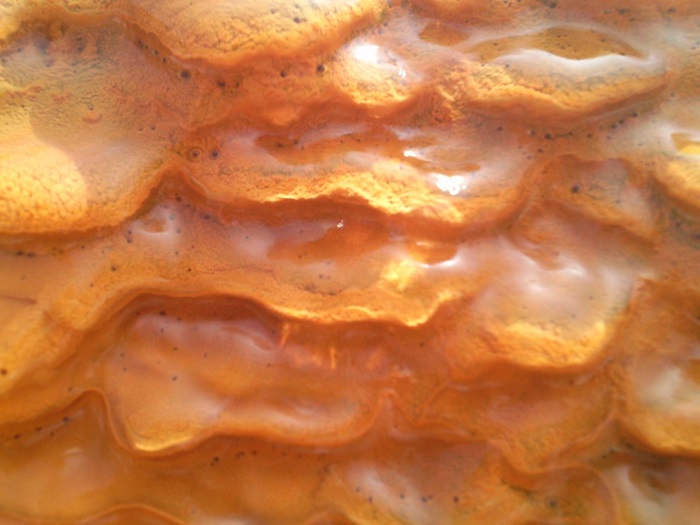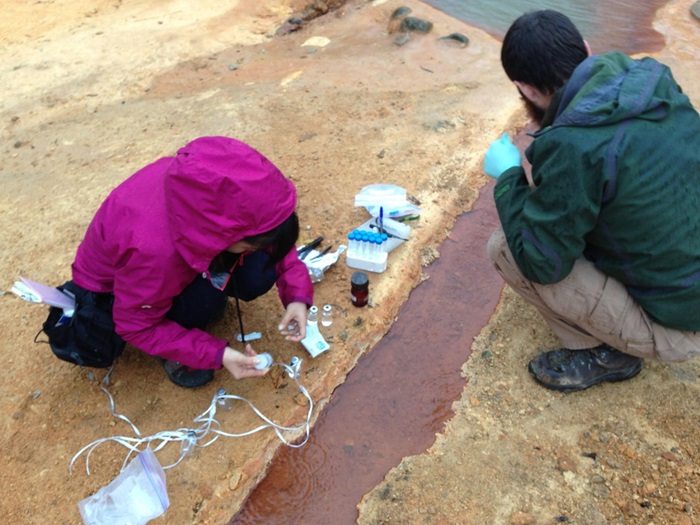PI Shawn McGlynn's new article on iron metabolisms in a Japanese hot spring has been featured as the cover of Geobiology journal.
Article title: Microbial diversity and iron oxidation at Okuoku-hachikurou Onsen, a Japanese hot spring analog of Precambrian iron formations
This article helps us interpret the processes that led to the accumulation of banded iron formations in the past. The mechanisms responsible for these massive iron accumulations in Earth's history are diverse, and process analogs such as the Okuoku-hachikurou (OHK) hot spring help us gain insight into which types of processes may have been active at which times.

Iron carbonate terraces developing at the edge of the pool.
Iron rich (ferrous iron) hot springs are somewhat rare on the Earth's surface, and one of the peculiar things about this site in particular is that the total biomass that accumulates is small compared to other similar areas. Surprisingly, even though the hot spring vigorously bubbles in anoxic gas, enough oxygen seeps in that the majority of the microbial community appears to be aerobic. This makes the OHK hot spring a good analog for what the Earth's ocean may have been like just after the great oxidation event when abundant oxygen accumulated on the Earth. PI Shawn McGlynn and his colleagues are currently attempting to learn more about the specific metabolisms that are operating in this water, and what factors control the geochemical-metabolic relationships.

Lewis Ward (Caltech/ELSI) and Airi Idei (Tokyo Metropolitan University) collecting samples.
| Journal: |
Geobiology |
| Title of original paper |
Microbial diversity and iron oxidation at Okuoku-hachikurou Onsen, a Japanese hot spring analog of Precambrian iron formations |
| Authors: |
L. M. Ward1, A. Idei2, S. Terajima3, T. Kakegawa3, W. W. Fischer1, S. E. McGlynn2,4,5 |
| Affiliations |
1 Division of Geological and Planetary Sciences, California Institute of Technology, Pasadena, CA, USA |
| DOI | 10.1111/gbi.12266 |
| Online published |
October 16, 2017 |
ELSI Researchers|Shawn McGlynn
